Press Brake Tooling Heat Treatment Process
Sheet metal press brake Tooling plays a crucial role in the metal processing industry. The rational application of their heat treatment processes can enhance the performance and service life of the molds. This article will provide a detailed introduction to press brake tooling heat treatment processes, including the purpose of heat treatment, commonly used heat treatment methods, and corresponding precautions.
Why Heat Treatment Matters
Heat treatment is a critical step in manufacturing press brake tooling, which includes punches and dies used for bending to achieve the desired shapes.
Without it or weak heat treatment, tools made from steels like 42CrMo, H13, or Cr12MoV would wear out quickly or fail to achieve working accuracy under the enormous forces involved (typically exceeding 100000 bending cycles in metal industries such as automotive or aerospace). It ensures that the tool maintains accuracy and reliability, reducing downtime and costs.
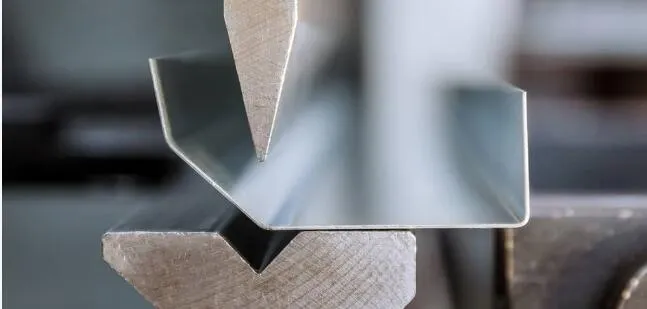
What is Heat Treatment for Press Brake Tooling?
Heat treatment is a crucial manufacturing step that significantly enhances the mechanical properties of press brake tooling, ensuring its durability, precision, and longevity. This heat treatment process involves heating and cooling the tool steel to alter its internal structure, resulting in improved hardness, toughness, and wear resistance. These properties are essential for tools that must withstand the immense forces and repetitive stresses of bending sheet metal.
What is The Purpose of Heat Treatment?
Heat treatment serves as a foundational process in the production and enhancement of press brake tooling, transforming raw steel into high-performance components capable of withstanding the rigorous demands of sheet metal fabrication.
The primary objectives of heat treating press brake tooling include:
Increased Hardness: A hard tool surface is necessary to resist deformation and maintain a sharp, precise edge during bending operations.
Enhanced Wear Resistance: The constant friction between the tooling and the sheet metal can cause abrasive wear. Heat treatment creates a surface that can withstand this abrasion for a longer period.
Improved Toughness: While hardness is crucial, tools must also be tough enough to resist chipping and cracking under the high impact and stress of the press brake. Heat treatment aims to find the right balance between hardness and toughness.
Stress Relief: The manufacturing process can create internal stresses within the tool. Heat treatment process, particularly tempering, helps to relieve these stresses, reducing the risk of distortion or failure.
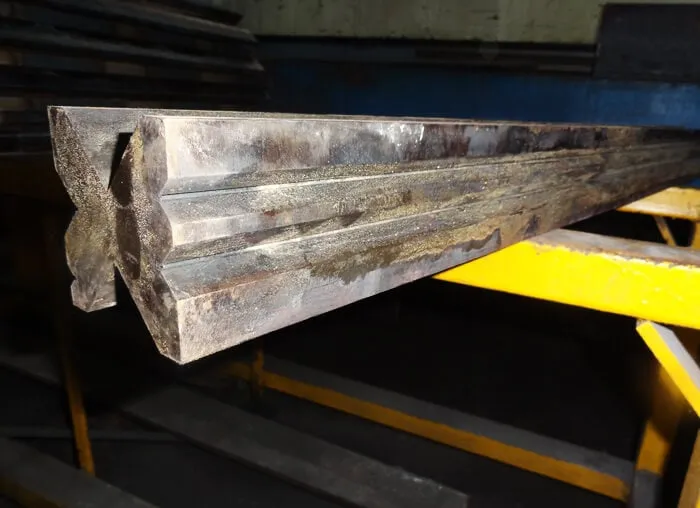
Steps in the Press Brake Tooling Heat Treatment Process
The press brake tooling heat treatment process is a controlled process that enhances the hardness, strength, and wear resistance of punches and dies used in press brakes for bending sheet metal. By bending tools made from high-quality steels (e.g., 42CrMo, D2) to precise heating processes and cooling cycles, heat treatment achieves a hardness of HRC 45-55, ensuring durability for over 100,000 bending cycles in applications like automotive, aerospace, and HVAC manufacturing.
The heat treatment process for press brake tooling involves several key steps, tailored to the steel type and bending requirements:
1. Material Selection and Cleaning:
The choice of material is fundamental to the success of the heat treatment process. Common materials used for press brake tooling include:
Chromium Molybdenum Steel (e.g., 42CrMo): Known for its high strength, toughness, and good wear resistance.
High-Grade Tool Steels (e.g., T8, T10, Cr12MoV): These steels offer a good balance of hardness and toughness.
High-Speed Steel (HSS): Chosen for its exceptional hardness and ability to maintain that hardness at high temperatures.
Tungsten Carbide: Offers extreme hardness and wear resistance, making it suitable for high-volume, high-precision applications.
2. Annealing
Full annealed tools to 750-800°C in a furnace(room temperature) to relieve internal stresses from forging or machining.
Hold the periods of time for 2-4 hours, then cool slowly (10-20°C/hour) to improve machinability and prepare for hardening.
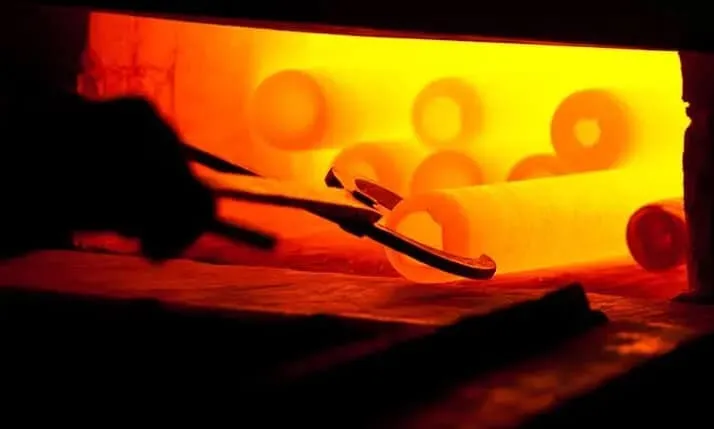
3. Case Hardening:
Hardening is the core process used to increase the tool’s resistance to deformation. A common method of hardening is quenching. In this process, the metal is heated to a temperature that changes its crystalline structure. This is followed by a rapid cooling process, often by immersing the tool in oil or another coolant. This quickly cooled work, or quenching, creates a very hard but brittle internal structure known as martensite.
Heat tools to austenitizing temperature (e.g., 850-900°C for 42CrMo, 1000-1050°C for D2) in a vacuum or controlled-atmosphere furnace to prevent oxidation.
Hold for 30-60 minutes to transform the steel’s microstructure to austenite.
Quench rapidly in oil or polymer to form hard martensite, achieving HRC 50-60 hardness.
4. Tempering
What is tempering process in heat treatment? Tempering involves reheating the hardened tool to a lower temperature and then cooling it at a controlled, slower rate. This process reduces the brittleness and relieves internal stresses created during quenching, resulting in a tougher and more durable tool that is less prone to cracking.
Reheat tools to 200-600°C (based on desired hardness) to reduce brittleness while maintaining strength.
Hold for 1-2 hours, often in two cycles, to enhance toughness and minimize cracking risks.
Cold worked in air to stabilize the structure.
What are the critical temperatures in press brake tooling hardness?
Critical temperatures in press brake tooling hardness refer to the specific temperature points during the heat treatment process of tool steel that fundamentally change its internal structure, determining the final hardness, toughness, and wear resistance of the punch or die.
| Stage | Temperature Range (Approx.) | What Happens | Importance for Tooling |
| Preheating | 650°C – 750°C (1200°F – 1380°F) | Relieves internal stresses, prevents cracking during further heating. | Essential for safety – skipping this can cause tools to crack like glass. |
| Austenitizing | Ac~1 Point: ~760°C (1400°F) Full Austenitizing: 980°C – 1050°C (1800°F – 1920°F) | Steel transforms to a soft, high-temperature phase called austenite, allowing carbon to dissolve uniformly. | The most critical step. Temperature and time here directly control final hardness and grain size. Too low = soft tool; too high = brittle, coarse grain. |
| Quenching | Rapid cooling to 50°C – 100°C (120°F – 212°F) | Austenite transforms into an extremely hard, brittle structure called martensite. | Creates the high hardness (e.g., HRC 60+). Must be fast enough to “trap” the carbon. |
| Tempering | 150°C – 550°C (300°F – 1020°F) | Reheats the brittle martensite to trade a small amount of hardness for toughness and stress relief. | Transforms the tool from brittle to usable. Higher tempering temps increase toughness but reduce hardness. |
5. Surface Treatment
This is a surface-hardening process where nitrogen is diffused into the surface of the steel. This creates a very hard and wear-resistant case without the need for quenching, thus reducing the risk of distortion.
Apply nitriding (gas or plasma at 500-550°C) to increase surface hardness to HRC 60-70.
Use coatings like titanium nitride (TiN) or laser hardening on high-wear areas (e.g., punch tips) to reduce friction and extend tool life by 20-30%.
6. Final Inspection and Finishing
- Test hardness (HRC 45-55) using a Rockwell tester.
- Verify dimensions (±0.01mm) with CMM or laser scanners to ensure precision.
- Grind or polish surfaces (Ra 0.8µm) for smooth bending and compatibility with press brakes (e.g., Amada, TRUMPF).
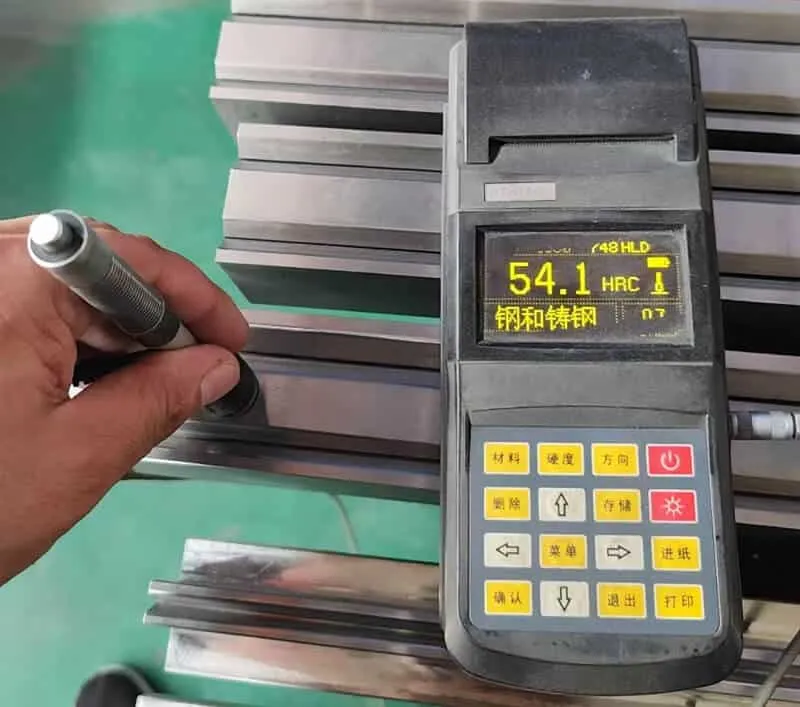
Benefits of Heat-Treated Press Brake Tooling
The press brake tooling heat treatment process offers several advantages in resolving problems during industrial metal bending.
- Increased Hardness:
Heat treatment significantly increases the hardness of the tooling, making it more resistant to wear and deformation. - Enhanced Press brake tooling Durability:
The process enhances the overall durability of the tooling, resulting in a longer service life. - Improved Wear Resistance:
Nitriding and coatings minimize wear, making them ideal for stainless steel bending. - Consistent Bending Results:
By maintaining the hardness and shape of the tooling, heat treatment contributes to consistent and accurate bending results.
Choosing the press brake tooling with a professional heat treatment process is the first line of defense to ensure the efficiency and accuracy of your production line. JSTMT has over 20 years of experience in tool manufacturing and heat treatment, providing durable bending solutions to customers worldwide.
📞 Consult the press brake tooling heat treatment process immediately.


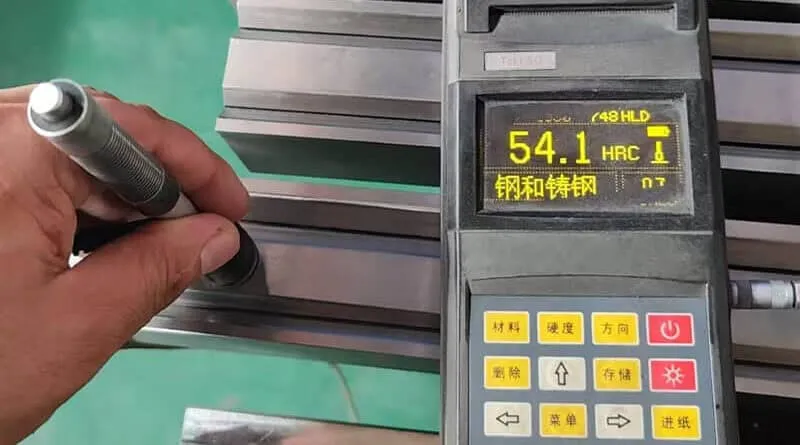

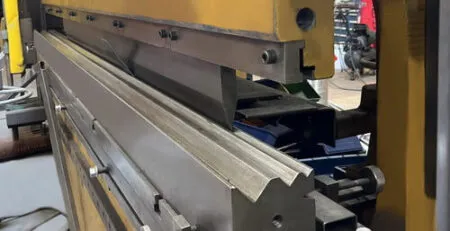

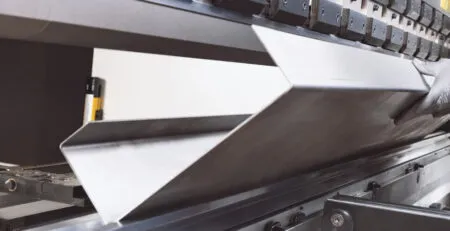
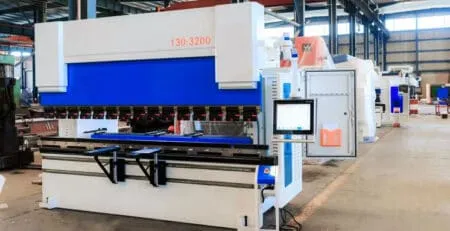
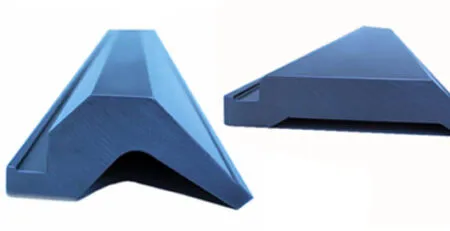

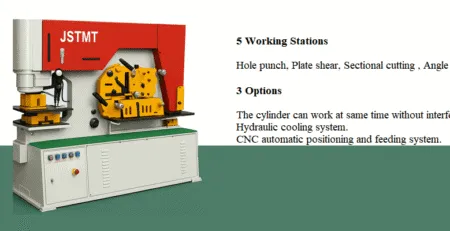


Leave a Reply